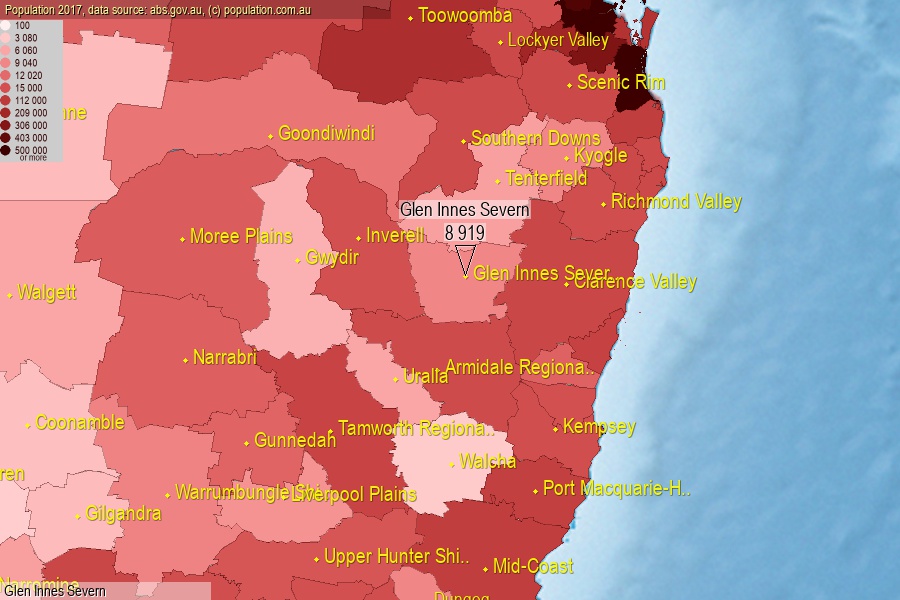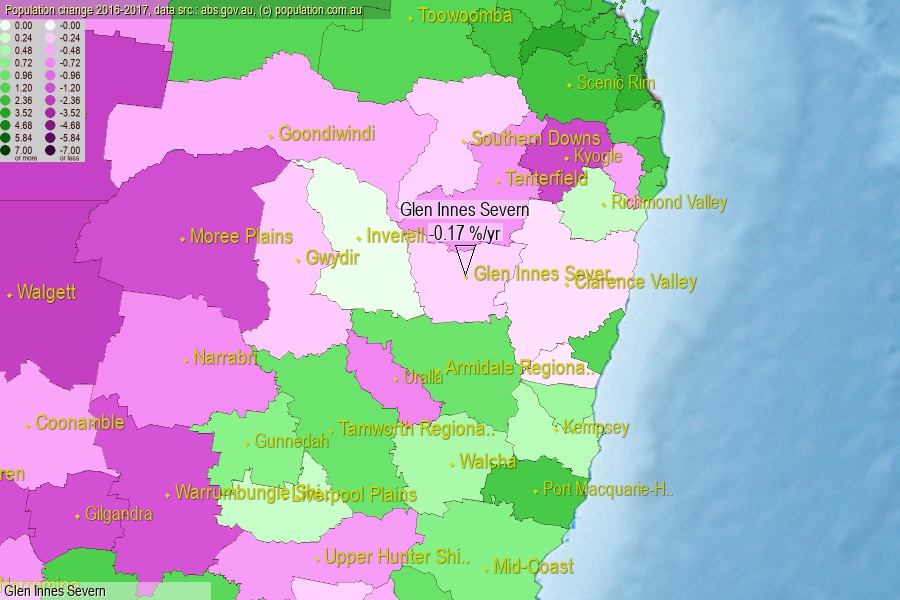 population.com.au
population.com.auLast official estimated population of Glen Innes Severn Area (as Local Government Area) was 8 919 people (on 2017-06-30)[2]. This was 0.04% of total Australian population and 0.112% of NSW population. Area of Glen Innes Severn is 5 480.00 km², in this year population density was 1.63 p/km² . If population growth rate would be same as in period 2016-2017 (-0.17%/yr), Glen Innes Severn population in 2025 would be 8 800. [0]



Click to enlarge. Glen Innes Severn is located in the center of the images.
Population [people], population density [p./km²] and population change [%/year] [2]
[1996-2001] -0.85 %/Y
[2001-2002] +0.34 %/Y
[2002-2003] +0.25 %/Y
[2003-2004] +0.07 %/Y
[2004-2005] +0.35 %/Y
[2005-2006] +0.90 %/Y
[2006-2007] -0.76 %/Y
[2007-2008] -0.13 %/Y
[2008-2009] +0.21 %/Y
[2009-2010] +0.15 %/Y
[2010-2011] -0.31 %/Y
[2011-2012] -0.07 %/Y
[2012-2013] +0.04 %/Y
[2013-2014] +0.11 %/Y
[2014-2015] +0.08 %/Y
[2015-2016] +0.09 %/Y
[2016-2017] -0.17 %/Y
[0] Calculated with linear interpolation from officially estimated population
[1] Read more about LGA and Australian Statistical Geography Standard (ASGS) on abs.gov.au
[2] Population data from Australian Bureau of Statistics (Population and density: 2017; change: 2016-2017)
[3] Digital Boundaries: Australian Statistical Geography Standard (ASGS) 2016.